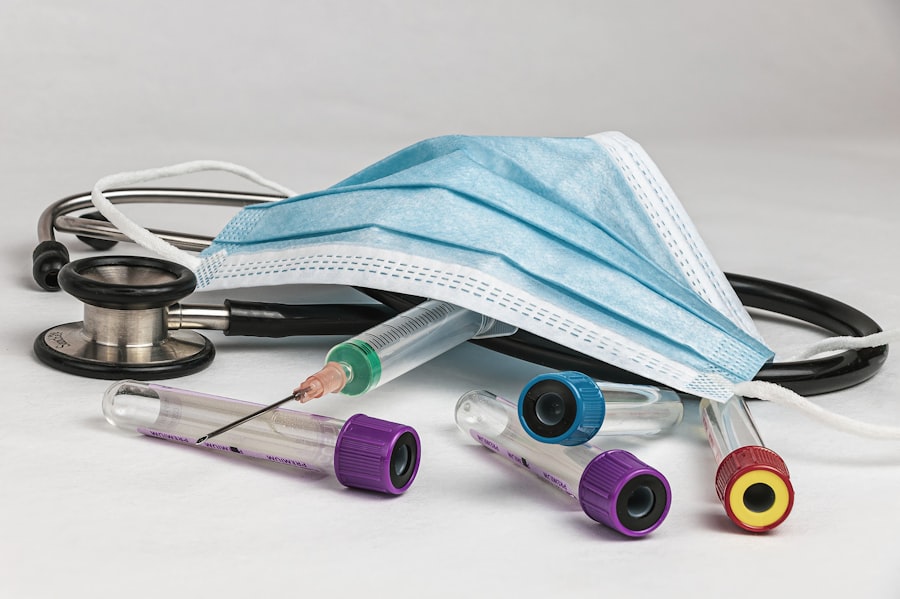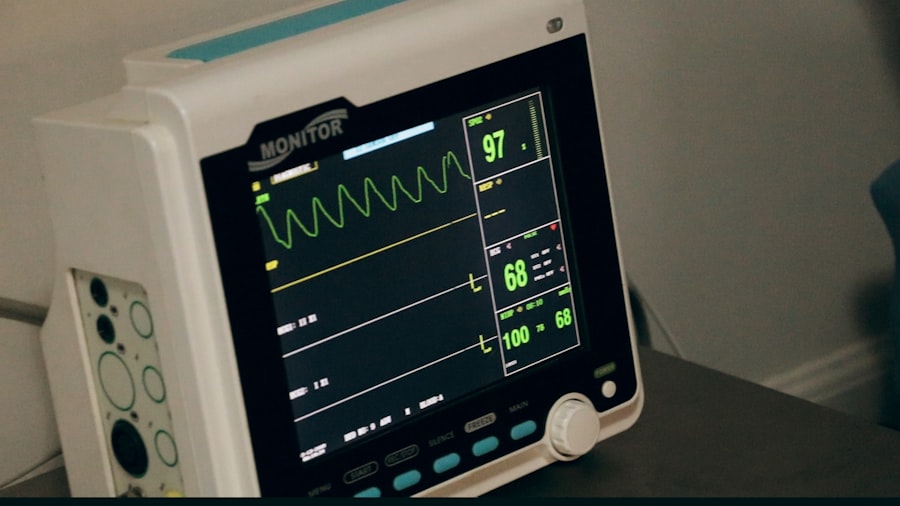The landscape of healthcare is undergoing a profound transformation, driven by the advent of cutting-edge medical devices that are reshaping the way we diagnose, treat, and manage diseases. These devices encompass a broad spectrum of technologies, from sophisticated imaging systems to wearable health monitors, each designed to enhance patient outcomes and streamline clinical workflows. The integration of advanced technology into medical practice not only improves the precision of diagnoses but also facilitates personalized treatment plans tailored to individual patient needs.
As we delve into the world of these innovative tools, it becomes evident that they are not merely enhancements to existing practices but rather pivotal elements that redefine the very essence of healthcare delivery. The evolution of medical devices has been propelled by rapid advancements in engineering, materials science, and information technology. For instance, the development of biocompatible materials has enabled the creation of implants and prosthetics that integrate seamlessly with human tissue, while advancements in microelectronics have led to the miniaturization of devices, making them more accessible and user-friendly.
Furthermore, the rise of telemedicine and digital health platforms has opened new avenues for device integration, allowing for real-time data collection and analysis. This convergence of technology and healthcare is not just a trend; it represents a fundamental shift towards a more proactive and preventive approach to health management.
Key Takeaways
- Cutting-edge medical devices are revolutionizing healthcare through advanced technology and innovation.
- Medical imaging and wearable devices significantly enhance diagnosis, monitoring, and patient care.
- Remote patient monitoring and surgical robots improve treatment precision and accessibility.
- Artificial intelligence is increasingly integrated into medical devices, boosting efficiency and decision-making.
- Ethical challenges and adoption barriers must be addressed to fully realize the benefits of new medical technologies.
The Impact of Medical Devices on Healthcare
The impact of medical devices on healthcare is multifaceted, influencing everything from patient care to operational efficiency within healthcare systems. One of the most significant contributions of these devices is their ability to enhance diagnostic accuracy. For example, advanced imaging technologies such as MRI and CT scans provide detailed insights into the human body, enabling clinicians to identify conditions that may have gone undetected with traditional methods.
This early detection is crucial in managing diseases like cancer, where timely intervention can significantly improve survival rates. Moreover, medical devices have revolutionized treatment protocols by enabling minimally invasive procedures that reduce recovery times and improve patient comfort. Techniques such as laparoscopic surgery utilize specialized instruments that allow surgeons to perform complex operations through small incisions, minimizing trauma to surrounding tissues.
This shift not only enhances patient outcomes but also reduces the burden on healthcare facilities by decreasing hospital stays and associated costs. The integration of these devices into everyday practice underscores their vital role in advancing healthcare quality and efficiency.
Advancements in Medical Imaging Technology

Medical imaging technology has witnessed remarkable advancements over the past few decades, fundamentally altering the diagnostic landscape. Innovations such as 3D imaging and functional MRI have provided clinicians with unprecedented views of anatomical structures and physiological processes. For instance, 3D mammography, or tomosynthesis, allows radiologists to examine breast tissue layer by layer, significantly improving the detection of breast cancer compared to traditional 2D mammograms.
This enhanced clarity not only aids in accurate diagnosis but also reduces false positives, thereby alleviating patient anxiety and unnecessary follow-up procedures. Additionally, the integration of artificial intelligence (AI) into imaging technology is revolutionizing how images are analyzed and interpreted. AI algorithms can process vast amounts of imaging data at speeds far exceeding human capabilities, identifying patterns and anomalies that may be overlooked by the naked eye.
For example, AI-driven tools are being developed to assist radiologists in detecting early signs of diseases such as Alzheimer’s or lung cancer by analyzing subtle changes in imaging studies over time. This synergy between human expertise and machine learning not only enhances diagnostic accuracy but also allows healthcare professionals to focus on patient care rather than being bogged down by routine image analysis.
The Role of Wearable Devices in Healthcare
| Metric | Description | Impact on Healthcare | Example Devices |
|---|---|---|---|
| Heart Rate Monitoring Accuracy | Percentage accuracy of heart rate data collected by wearables | Enables early detection of arrhythmias and cardiovascular issues | Apple Watch, Fitbit Charge |
| Step Count Tracking | Number of steps recorded daily by wearable devices | Promotes physical activity and helps manage obesity and diabetes | Garmin Vivosmart, Xiaomi Mi Band |
| Sleep Quality Monitoring | Assessment of sleep stages and duration | Improves diagnosis and management of sleep disorders | Oura Ring, Fitbit Versa |
| Blood Oxygen Saturation (SpO2) Measurement | Accuracy of SpO2 readings to monitor respiratory health | Assists in managing conditions like COPD and COVID-19 | Withings ScanWatch, Garmin Fenix |
| ECG Monitoring Capability | Ability to record and analyze electrocardiograms | Supports early detection of atrial fibrillation and other heart conditions | Apple Watch Series 6+, Samsung Galaxy Watch |
| Patient Adherence Rate | Percentage of patients consistently using wearable devices as prescribed | Improves chronic disease management and treatment outcomes | N/A (varies by study) |
| Data Transmission Frequency | How often data is sent from device to healthcare provider | Enables real-time monitoring and timely interventions | Continuous or periodic syncing devices |
| Battery Life | Average duration device operates before recharge | Influences user compliance and data continuity | Ranges from 1 day to 2 weeks depending on device |
Wearable devices have emerged as a transformative force in healthcare, empowering individuals to take charge of their health through continuous monitoring and data collection. These devices range from fitness trackers that monitor physical activity levels to sophisticated medical-grade wearables capable of tracking vital signs such as heart rate, blood pressure, and glucose levels. The proliferation of wearables has democratized health monitoring, making it accessible to a broader population and fostering a culture of preventive care.
One notable example is the use of continuous glucose monitors (CGMs) for individuals with diabetes. These devices provide real-time data on blood sugar levels, allowing patients to make informed decisions about their diet and medication management. By facilitating timely interventions based on real-time data, CGMs help prevent complications associated with diabetes, such as hypoglycemia or hyperglycemia.
Furthermore, the integration of wearables with mobile health applications enables users to visualize their health data trends over time, promoting greater engagement in their health management.
The Future of Remote Patient Monitoring
Remote patient monitoring (RPM) represents a paradigm shift in how healthcare is delivered, particularly in the context of chronic disease management. By leveraging technology to monitor patients outside traditional clinical settings, RPM enables healthcare providers to maintain continuous oversight of patients’ health status while reducing the need for frequent in-person visits. This approach is particularly beneficial for individuals with chronic conditions such as heart disease or hypertension, where regular monitoring is essential for effective management.
The future of RPM is poised for significant growth as advancements in connectivity and data analytics continue to evolve. The proliferation of Internet of Things (IoT) devices allows for seamless data transmission from patients’ homes to healthcare providers in real-time. For instance, smart scales can transmit weight data directly to a physician’s dashboard, alerting them to potential issues before they escalate into serious health concerns.
Additionally, the integration of telehealth services with RPM platforms enables healthcare providers to conduct virtual consultations based on real-time data insights, enhancing patient engagement and adherence to treatment plans.
Surgical Robots and Minimally Invasive Procedures

Surgical robots have revolutionized the field of surgery by enabling minimally invasive procedures that offer numerous advantages over traditional open surgeries. These robotic systems provide surgeons with enhanced precision, flexibility, and control during complex procedures. For example, the da Vinci Surgical System allows surgeons to perform intricate operations through small incisions using robotic arms controlled by a console.
This level of precision minimizes tissue damage and leads to quicker recovery times for patients. The benefits of robotic-assisted surgery extend beyond improved surgical outcomes; they also enhance the overall patient experience. Patients undergoing minimally invasive procedures typically experience less postoperative pain, reduced scarring, and shorter hospital stays compared to those who undergo traditional surgeries.
Furthermore, the ability to perform surgeries with greater accuracy can lead to fewer complications and lower rates of readmission. As technology continues to advance, we can expect further innovations in surgical robotics that will expand their applications across various specialties.
The Potential of Artificial Intelligence in Medical Devices
Artificial intelligence holds immense potential in transforming medical devices by enhancing their functionality and effectiveness. AI algorithms can analyze vast datasets from various sources—such as electronic health records (EHRs), imaging studies, and wearable devices—to identify trends and predict patient outcomes. This capability allows for more personalized treatment approaches tailored to individual patient profiles.
One compelling application of AI in medical devices is in predictive analytics for early disease detection. For instance, AI-driven algorithms can analyze patterns in EHRs to identify patients at high risk for conditions like heart disease or diabetes before symptoms manifest. By flagging these individuals for proactive interventions—such as lifestyle modifications or preventive medications—healthcare providers can significantly improve patient outcomes while reducing overall healthcare costs.
Moreover, AI can enhance decision-making processes within clinical settings by providing evidence-based recommendations based on real-time data analysis.
Challenges and Ethical Considerations in Adopting Cutting-Edge Medical Devices
Despite the numerous benefits associated with cutting-edge medical devices, their adoption is not without challenges and ethical considerations. One significant concern revolves around data privacy and security. As medical devices increasingly collect sensitive patient information, ensuring robust cybersecurity measures becomes paramount to protect against breaches that could compromise patient confidentiality.
Healthcare organizations must navigate complex regulatory landscapes while implementing stringent safeguards to secure patient data. Additionally, there are ethical implications related to equity in access to advanced medical technologies. Disparities in healthcare access can lead to unequal benefits from cutting-edge devices, particularly among underserved populations.
It is crucial for policymakers and healthcare leaders to address these disparities by promoting equitable access to innovative technologies through initiatives such as telehealth expansion or subsidized programs for low-income patients. Balancing technological advancement with ethical considerations will be essential in ensuring that all patients benefit from the promise of cutting-edge medical devices while maintaining trust in the healthcare system.



